Why does not eucharis bloom at home and what to do about it?
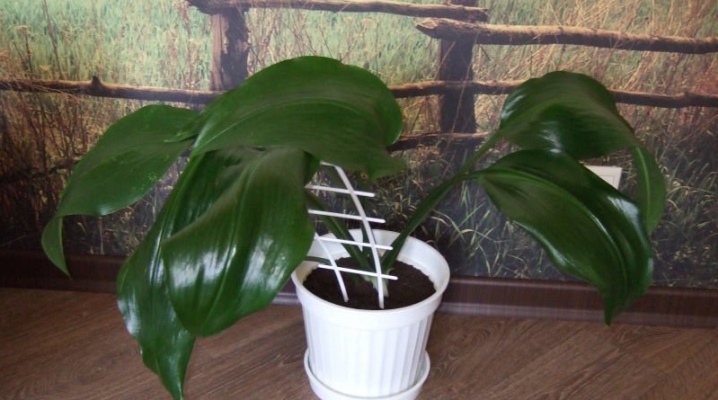
Eucharis (or Amazonian lily) is not the most common indoor flower. And in this regard, even experienced growers are faced with problems in growing it. Nevertheless, the plant has arrived from the humid and high-temperature tropics, therefore, appropriate conditions for its maintenance are required. And if the Amazonian lily is not blooming, perhaps the conditions for this are uncomfortable. But it may also be such that the grower is simply rushing things.
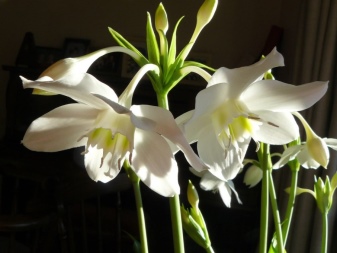
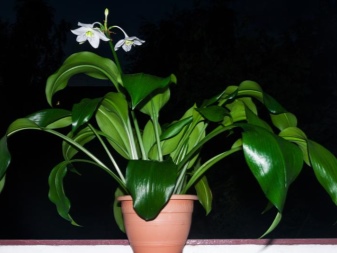
When do the buds appear?
Eucharis bloom usually occurs in spring and autumn. And when flowers appear at a house plant, it can be considered a real holiday. The flower buds resemble daffodils, but they are much more graceful and the aroma emanating from them can be compared to a delicate floral perfume.
To say that the Amazonian lily will often delight you with flowers is impossible. And although according to some associations its flowers are called Christmas, there are more chances to admire them in February-March. The plant develops a long stem with a bunch of lush, elegant flowers that open one after the other.
If the conditions for flowering are favorable, eucharis can form 2 peduncles or even more. And if an experienced florist has learned to “understand” the Amazon lily, she can delight him with flowers up to three times a year: this happens in May, in the last month of summer and in one of the winter months.
The flowers of the Amazonian lily open in turn, each flower lives for a week (or a little more), the whole inflorescence blooms for 20 days. If the flower is large, then up to 8 peduncles can form on it, although these cases are rare. It is impossible to prolong the eucharis bloom itself, although many growers would like to do this.
But it should be understood that for a plant, prolongation of flowering will be a huge load, simply unbearable.
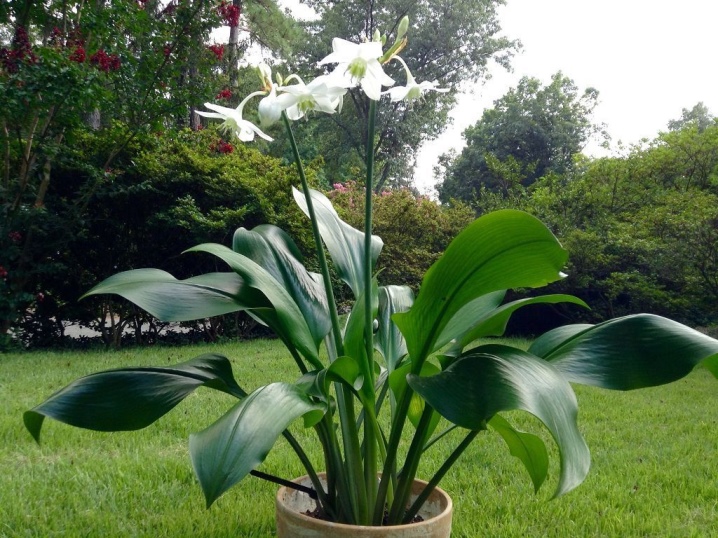
After flowering, the plant needs a dormant period: during this time, the Amazonian lily gains strength in order to optimally approach the new active stage. And if the breeder begins to overstimulate the flower, he will simply postpone the dormant period, the plant will increase the green mass. But it will not bloom, no matter how you stimulate.
This means only one thing: the flower, like all life on earth, obeys natural cycles. And if you do not interfere with these cycles, if you do not roughly interfere with the life of a flower, it will delight you with wonderful flowering periods and stable periods of rest.
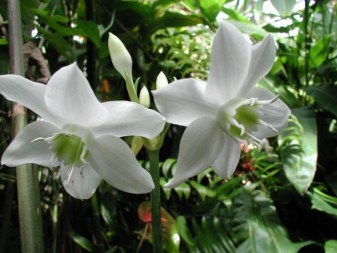
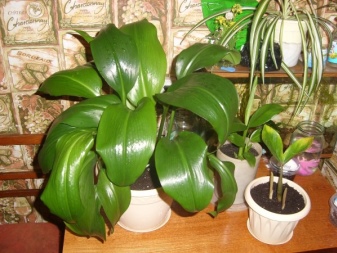
Why didn't the Amazon lily bloom?
But if the flower should already please with beautiful buds, and there is still no flowering, it is hardly a matter of the naturalness of the cycle. In most cases, this is a florist's mistake. For example, he picked up the wrong container for eucharis. Most indoor plants, as you can see, grow well in medium to large pots. But the universal conditions are not suitable for eucharis. He just needs a small pot.
Only in a modest-sized flowerpot the plant will be "comfortable": the root system in such a pot will fill about 90% of the space, which is quite comfortable for an Amazon lily. It is the plant growing in small containers that can please with bright and large buds. In such conditions, eucharis will grow rapidly, steadily, developing good immunity against diseases.
The ideal container for eucharis is a cylindrical flowerpot; it should be no more than 2 cm wider than the rhizome of the plant.

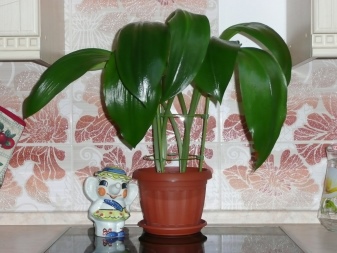
Such conditions contribute to the flower giving many new children. If you choose a large eucharis pot, the flower will "concentrate" on the growth of the bulb. And it is these lilies that may not bloom at all.
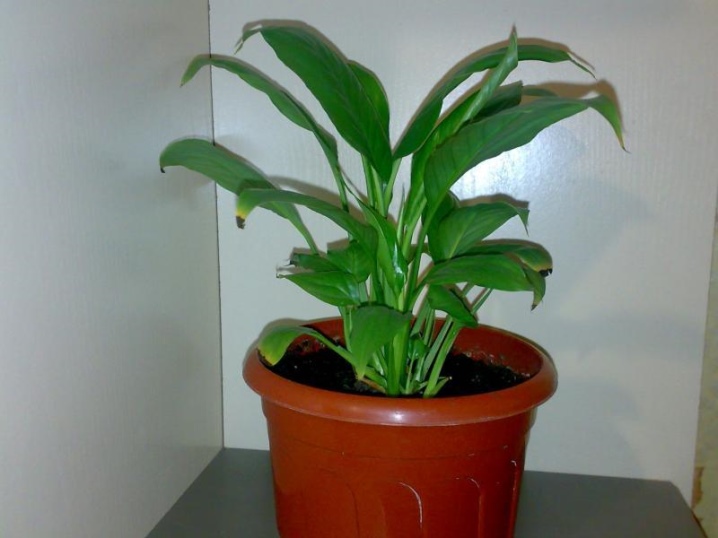
Consider other reasons why eucharis does not bloom.
- Frequent transplant. If you are growing an exotic flower at home, be prepared for the fact that, unlike many other indoor plants, it needs to be transplanted less often. In the case of eucharis, the transplant does not have the best effect on the plant, and after it it often requires a prolonged recovery period. And it's not just the shoots that need a delicate approach, but also the tender roots. It is the roots that often die during transplantation. Once every 3-4 years - here is the scheme for transplanting an Amazon lily, do not deviate from it. And if you have already taken up this matter, then plan it only at the beginning of March.
- The humidity in the room is below normal. Eucharis has no special requirements for humidity, but if the air is too dry, its leaves and shoots can wither. And this is also a common reason for the lack of buds. The plant in this situation cannot expend energy on the formation of flowers, because it is protected from wilting. This means that the Amazonian lily requires regular moisture, especially in the spring and first half of summer. But it is not worth moisturizing eucharis in winter, as this can lead to the development of a fungus.
- Illiterate watering or incorrect fertilization scheme. The soil moisture regime should be moderate, as well as the air humidity should not be excessive. In season, add moisture little by little, not in very large portions, but at the same time the soil should be evenly moistened. In winter, eucharis is watered twice less. During the dormant period, the plant needs semi-dry soil. If you forgot to feed the flower, if you fed it over the norm, this can also negatively affect the flowering.
- There is no rest stage. In order for the Amazonian lily to bloom, develop, be viable, it just needs to fully live the resting stage. This stage occurs in winter or late autumn. Everything is compared with the conditions natural for a flower: conditions unfavorable for the growth of eucharis are observed in wildlife in winter or at the end of autumn. The temperature drops seasonally, and all these conditions contribute to the flower entering a dormant period. The flower's need for water decreases, it also needs less nutrients, inhibition overtakes the physiological processes of the plant. If the plant is not provided with rest, its annual cycle will last, and the onset of the next phase of budding will also last.
If you analyze all the above points, if you find the reason why your eucharis does not give flowers, part of the problem has already been solved.
But the most offensive thing is that some growers do not bother with analysis, search for reasons, but simply start aggressively stimulating flowering. If all the reasons are considered, all negative provoking factors are eliminated, you can resort to some professional tricks.

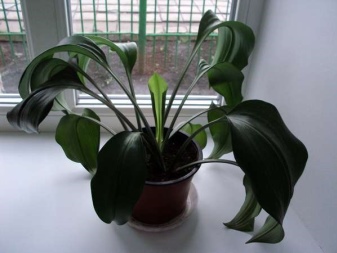
How to simulate flowering?
It is impossible to make a plant bloom without stress. Moderation is needed in any business, therefore, to begin with, just create comfortable conditions for Eucharis at home. And then think about how to create an Amazonian lily artificial wintering program.
To do this, you actually need to take 3 steps.
- You should transfer the flower to a dark or just a well-darkened space, where the temperature will not be higher than +15 degrees Celsius.
- Cut the watering mode of the substrate by half. In this case, you should think about watering the soil only when the soil has dried by more than two-thirds.
- Do not feed the flower, do not moisturize its foliage.
You don't need to do anything else. Keep this container with eucharis for 1-2 months. And then transfer it to the usual conditions of detention.
And if everything is done correctly, then you can count on 2-3 flowering cycles per year.This is the only relatively gentle way to stimulate the emergence of buds. There can be no super-agents, no special dressings. One way or another, but the plant must go through all the stages.

Optimal living conditions and care
There is a whole list of tips that the florist should ideally get acquainted with before the Amazon lily appears at home. If he does not possess superficial knowledge concerning its content, but systemic information, there will be no problems with growing.
Here are 10 tips for Eucharis growers.
- To keep the flowers of the Amazonian lily large and bright, feed the plant with potassium-phosphate mixtures in a timely manner.
- To prevent small and inconspicuous buds from appearing on the plant, remove large and ineffective shoots from it.
- Check the temperature and humidity readings in the room where the eucharis is growing twice a week. In summer, he needs a temperature of + 23 ... 30 degrees. But even within + 18 ... 22 the plant will be fine. In the heat, he is often taken out into the fresh air. The Amazon lily needs high humidity during the active period.
- Twice, or even three times per season, the flower should be treated with agents against fungi and parasites.
- After flowering on the eucharis, it is imperative to remove all peduncles - this way it will be easier to introduce it into the resting phase.
- If you start organizing flowering stimulation more than three times a year, most likely, you will simply destroy the plant. It will lose the ability to bloom.
- Transplanting the Amazon lily is possible only by transshipment - all other methods are dangerous for the plant. Transfer allows you to delicately transfer the flower without disturbing its delicate root system.
- Be sure to rejuvenate mature plants so that they can bloom.
- The recipe for the correct soil for eucharis can be as follows: 1 part peat, 1 part sand and 3 parts leafy earth.
- If you decide to propagate the Amazonian lily by seeds, get ready for the complexity of the process: eucharis will bloom under the most favorable conditions in 5 years, not earlier.


Shade eucharis from bright ultraviolet light, organize nutritious and moisture-absorbing soil for it, pick up a small pot in which the root system will take 80% of the space. Transplant the Amazon lily only in the spring, every 5 years. Watch out for mushroom gnats, aphids, mealybugs, and spider mites.
The best place for eucharis is the east or west window.
How to make eucharis bloom, see the video below.







































































































The comment was sent successfully.